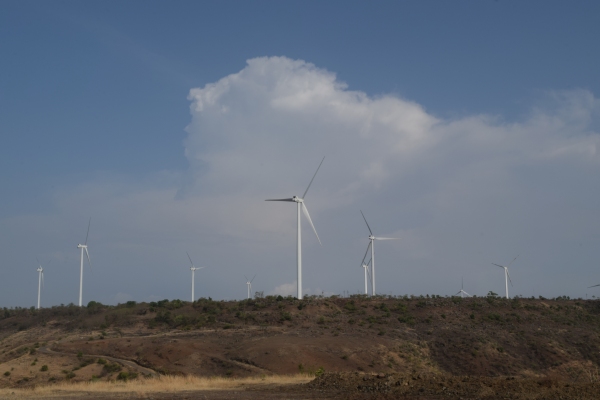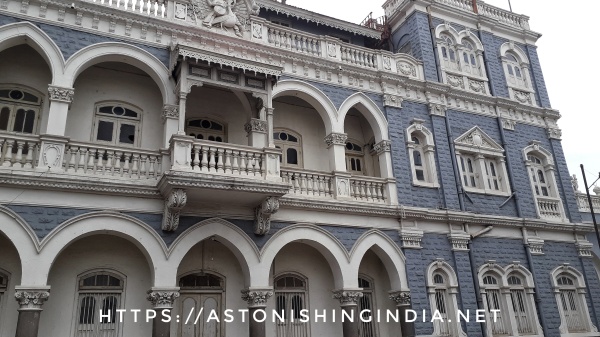Why You Should Visit Kaas Pathar, The Plateau Of Flowers in Satara, Maharashtra
The dry thirsty landscape is fed with life elixir all through the monsoons. The environs turn a lush green and soothe our eyes and senses. But with September the rainy season almost ends. And it is during this lull period when rains have just about ceased and the second wave of heat has not yet hit that the Satara district in Maharashtra experiences a riot of colors.
For a short duration of about two weeks (give or take a few days ) the plateau at Kaas in Satatra blooms with a wide variety of flowers.
I was at Kaas Pathar in September 2018 and the carpet like expanse of flowers in different sizes and colors made me fall in love. As far as eyes could see, the yellows, pinks, blues, whites rose up from the bed of green with the backdrop of hills beyond.
Kaas Pathar or plateau in Satara is second best option if the ‘Valley Of Flowers’ in Himalayas seems difficult to achieve for non-trekkers.
Located in Sahyadri Sub Cluster of Western Ghats, 25 kilometers west of Satara, Kaas Plateau has been accorded the status of UNESCO World Natural Heritage Site.
Here is why you should visit this beautiful place at least once:
-
Bio-Diversity Hot-spot
Kaas plateau is home to about 850 species of wild flowers and plants and endemic variety of birds, bees, spiders and snakes. With such varied flora and fauna across the waterfalls, ponds, forest and the plateau, Kaas is a bio-diversity hotspot.
Of the 850 species of wild plants 624 are on the endangered list and need strict measures for conservation. Due to the weather conditions and the basaltic rock with thin layer of laterite soil, 39 species of flowers are endemic to the Kaas Pathar and can not be found anywhere else. Orchids, shrubs, carnivorous plants, lichens find home at Kaas plateau.

A variety of bees,insects and spiders are endemic to Kaas. A fly on flowers called ‘Hirvi Nisurdi’ in Marathi
More than 200 species of birds, 8 kinds of spiders, striped coral snake, new genus of beetle and many butterflies are found at the plateau besides spotted cats, civet and gaur.
-
Rare flowers
Kaas has some very rare and endemic flowers which if not conserved will be lost forever and the palteau will turn barren.
When I was visiting the the plateau of flowers, the entire area was mostly covered in a carpet of yellow flowers. Locally called ‘Kawla’ in Marathi, Smithia hirsuta flowers are on the endangered list of International Union for Conservation of Nature (IUCN). These flowers are very delicate and can not survive if trampled.

Endangered Smithia Hirsuta at Kaas
The pink flowers of ‘Jambhala Terda’ in Marathi or Impatiens Lawii are another variety of delicate flowers which shrivel if rain hits after they bloom. These flowers survive only for very few days.

Jambhala terda
Blue flowers like ‘Siteche aswe‘ or Sita’s tears are very sensitive too. There is an interesting story for these blue flowers with a white tear drop spot (Utricularia purpurascens) to be named Sita’s tears by locals. The folklore suggests that when Ravan was abducting Sita, her tears fell on these flowers and left a white stain in the shape of a tear drop.

Sitas tears
I was lucky to spot one late bloomer of ‘Topli karwi‘ or Strobilanthes sessilis. These rare flowers bloom once in 7 to 8 years. The next mass blooming of these flowers is expected around 2023-24.

Topli Karvi blooms once in 7 to 8 years
There are more such beautiful tiny flowers that are very rare. Even the small flowers of grass are very pretty.
I was helped with the names of flowers by Jayesh Pranjpe of The Western Routes who curates customized tours around food and heritage in and around Pune.
FOR MORE IMAGES SEE THIS VIDEO
-
Photographers’ delight
For visitors who are passionate about wildlife, macro and micro photography, Kaas pathar is like a treasure hunt. The only thing to keep in mind is however the delicate and fragile nature of the flower species on the plateau. Amateur photographers should not get carried away and destroy the tender plants.
However the scenic beauty is in most danger because of this specific reason. Visitors who tend to shoot via mobile devices are careless while taking photographs and step on the grass and tiny plants which is a menace to the fine balance of ecology.
-
Easy to Travel
Kaas Pathar is connected by road to Mumbai, Pune, Kolhapur, Satara and Sangli and is easy to travel. There is no hiking or trekking involved in visiting this flat land of flowers.
Things to keep in mind while visiting the Kaas Plateau:
- Hire a trained guide who will tell you the local names of flowers. The villagers have been trained as guides to take visitors around. This also provides them some livelihood.
- Be compassionate to the flora and fauna.
- Walk on the designated trail to avoid trampling on delicate flowers.
- Do not cross the fence of cordoned area for pictures.
- Take pictures of tiny flowers, plants or butterflies from cameras in full zoom in mode to avoid stepping on other plants.
- Do not litter plastic waste like bottles, snack packets, cigarette stubs.
- Do not spit.
- Do not create noise by playing loud music.
- Do buy entry tickets to support villagers livelihood.
How to reach Kaas Plateau:
- Online booking is required to visit the Kaas. The entry is restricted to 2000 visitors every day. The fee is minimal of about 100 Rs.
- Kaas plateau is about 25 km from Satara.
- State transport buses and private cars can be used to reach Kaas.
- A parking space away from the plateau has been created for all vehicles. Small shuttle buses can be taken from the parking till the Kaas plateau.
- Mumbai is about 280 km while Pune is 125 km from the plateau.
Where to stay and best time to visit:
- With villagers depending on visitors to Kaas for their livelihood, many home-stays have come up in last couple of years inthe Kaas village. Simple food and simple village stay is easily available in very cheap rates.
- Soon after the rains is the best time to see the blooms of various kinds. The landscape changes color in every few days with different flowers blooming at different stages.
More things to see around Satara:
- Kaas lake

Kaas Lake
- Sajjangad
- Vajrai Waterfalls are the highest waterfalls
- Windmills near Satara

Windmills at the horizon
- Rajwada (Chhatrapati Shivjaji Maharaj’s wife’s maternal home)

Sai bai’s maternal Rajwada
For more images of flowers visit my Youtube channel
PIN IT



This is very really unique helpful information. keep it up. Thank you so much!
LikeLike
Great to read. Very informative post.
LikeLike
thank you Rupam
LikeLiked by 1 person
Nice
LikeLike
very nice blog...
LikeLiked by 1 person
Thank you so much 🙂
LikeLike
Your write up is great. However forgive me for not mincing words. Kaas was beautiful until it was known to locals only. It’s a disaster now with loads of so called nature lovers who come here and contribute to its destruction.
LikeLiked by 1 person
Totally agree. It is same with every beautiful place in India. But if only people strictly adhere to guidelines and are compassionate towards flora and fauna , heritage etc our places can be saved and worth visiting.
Thanks for reading the blog. Hope you read more and share your opinions.
LikeLike